
Technologies
Refrigerants
Natural, efficient and growing demand
The refrigerants ammonia, carbon dioxide and the hydrocarbon group are among the natural refrigerants and offer many advantages, especially in terms of environmental compatibility and energy efficiency. As a specialist in sustainable refrigeration solutions, Frigo-Consulting is a leader in engineering systems based on such future-proof technologies. For refrigeration solutions that impress not just today, but also tomorrow. Let’s define the right refrigerant for your application together.
Carbon dioxide
Carbon dioxide (CO2 or R744) is a naturally occurring gas, and as such, part of our atmosphere. From birth, we inhale and exhale it and ingest it daily in the form of carbonic acid, e.g. in mineral water.
It first appeared as a refrigerant in the 19th century, as the benefits of CO2 as a refrigerant were already known at that time. In the 20th century, synthetic refrigerants replaced CO2, and it was not until the 21st century, when the serious consequences of synthetic refrigerants for the environment became known, that carbon dioxide experienced an immediate renaissance as a naturally available refrigerant. Modern CO2 refrigeration systems are characterised by their energy-efficient and highly environmentally-friendly operation, and ever-growing demand confirms their acceptance.
And yet CO2 is one of the biggest climate killers of our time? The critical factor in terms of climate change is not the gas CO2 itself, as CO2 is neither flammable nor toxic, but the quantity in which we emit CO2 into our atmosphere. A refrigeration system and heat pump consists of a closed circuit in which a fluid, known as a refrigerant, circulates. This applies to the refrigerator in the kitchen, as well as to the air conditioning in the car and the heat pump in the basement. Synthetically produced refrigerants have generally been used in the past. However, since these are several 1,000 times more harmful to the environment than CO2, every effort is being made, paradoxically, to replace synthetic refrigerants with CO2.
Two birds with one stone: if CO2 is used as a refrigerant, energy efficiency is increased, while CO2 emissions are reduced at the same time.
On the other hand, the CO2 used in refrigeration systems and heat pumps is a waste product from industrial processes that can be reused in such systems. If the CO2 enters the environment in the event of a leak, it has a negligible impact compared to synthetic refrigerants.
Frigo-Consulting recognised the benefits of CO2 technology early on and contributed decisively to establishing this type of refrigeration. In 2003, the first subcritical refrigeration system with CO2 engineered by Frigo-Consulting went into operation, followed by the first transcritical system in 2006. Since then, we have created more than 1500 refrigeration systems with CO2. These include the first system with parallel compression and the first system with integrated ejectors.
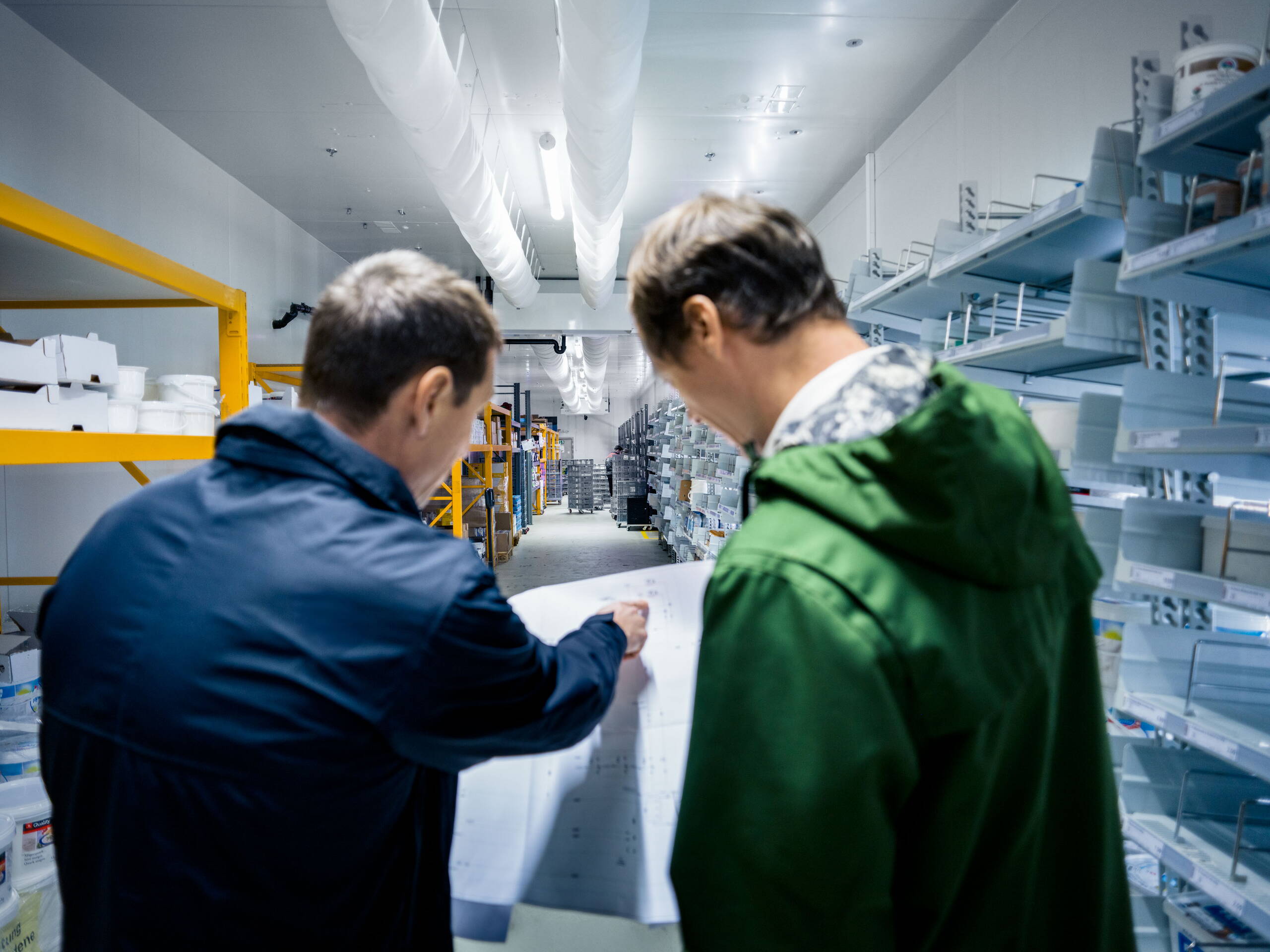
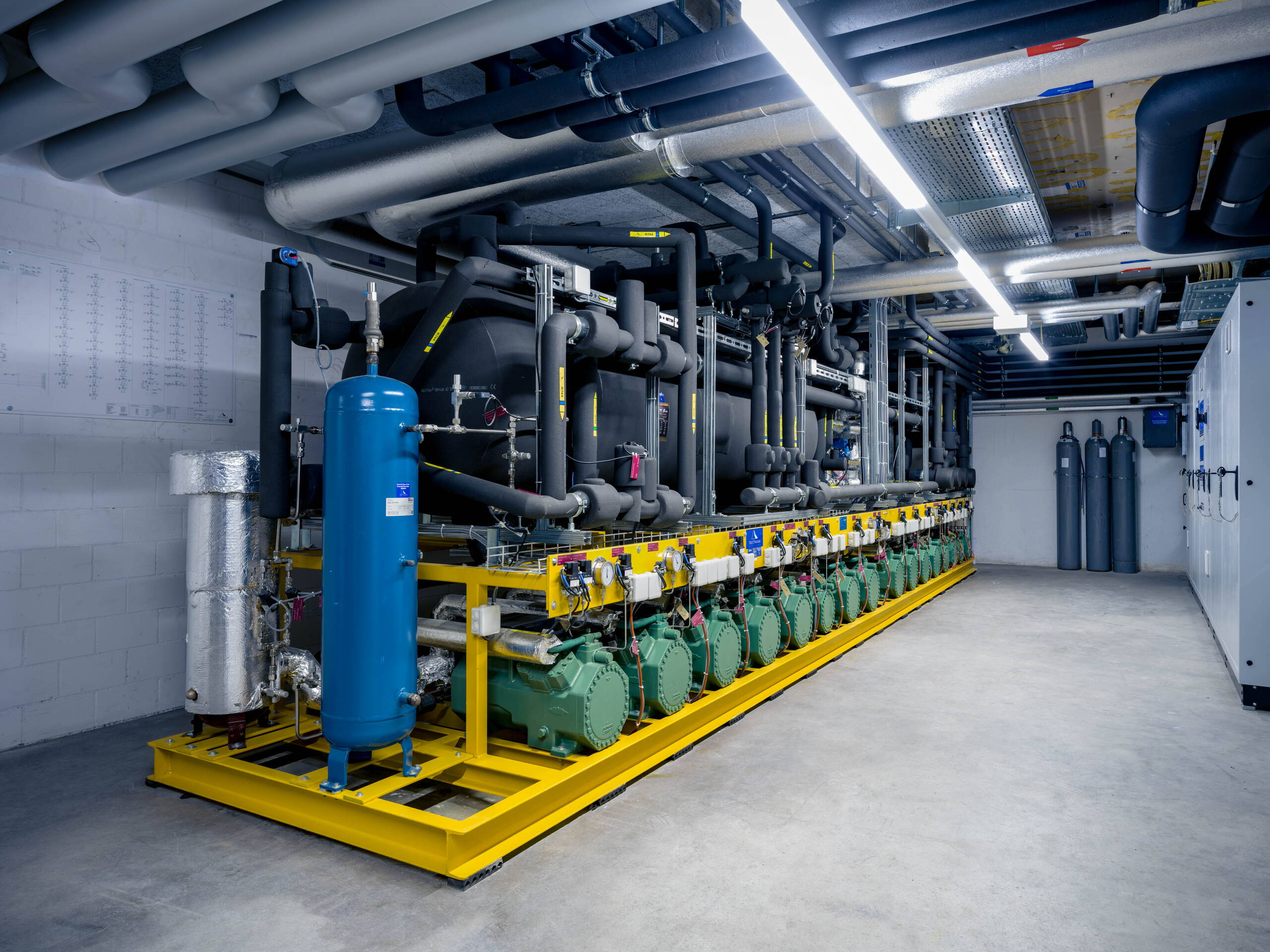
Ammonia
Ammonia (NH₃ or R717) is a true all-rounder. While synthetic refrigerants became increasingly important in the 20th century for small and medium-sized refrigeration capacities, ammonia remained the undisputed leader in industrial refrigeration – and continues to do so today. Its excellent thermodynamic properties, which are natural and environmentally friendly among other things, make it a particularly economical solution, especially for large systems and heat pumps.
Ammonia is used in compression chillers such as reciprocating and screw compressors and in absorption chillers. Thanks to its efficiency and versatility, NH₃ has been a reliable standard in industrial refrigeration for decades.
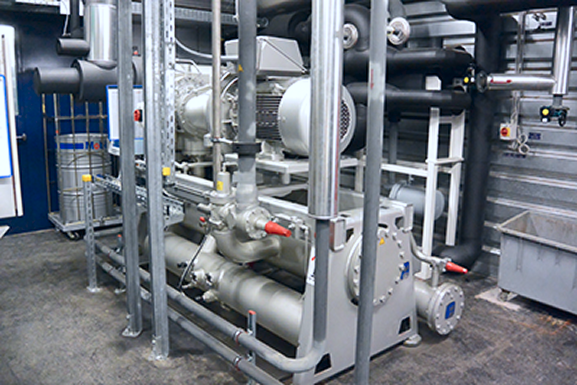
At Frigo-Consulting, we tap into ammonia’s strengths: for systems with high performance requirements and in heat pumps, this refrigerant is our first choice – sustainable, efficient and future-proof.
Hydrocarbon
Hydrocarbons have proven themselves for years as refrigerants in small and medium-sized refrigeration systems and heat pumps. Due to the ban on refrigerants with ozone-depleting potential and the gradual implementation of the F-gas Regulation, they are becoming increasingly important. With a negligible greenhouse effect (GWP), no ozone depletion potential (ODP) and no corrosive effect on the common materials used in refrigeration technology, they offer a sustainable and efficient alternative.
Of the family of hydrocarbons, iso-butane (R600a), propane (R290) and propene (R1270) are primarily used. Iso-butane is mainly found in household appliances, while propane is mainly used in refrigeration technology and heat pumps. Propene, on the other hand, is particularly suitable for industrial freezing applications.
Frigo-Consulting uses hydrocarbons selectively, depending on the specific requirements and application, while taking their individual properties into account. Possible applications include process cooling or the subcooling of cascaded refrigeration systems to increase efficiency or cooling capacity.
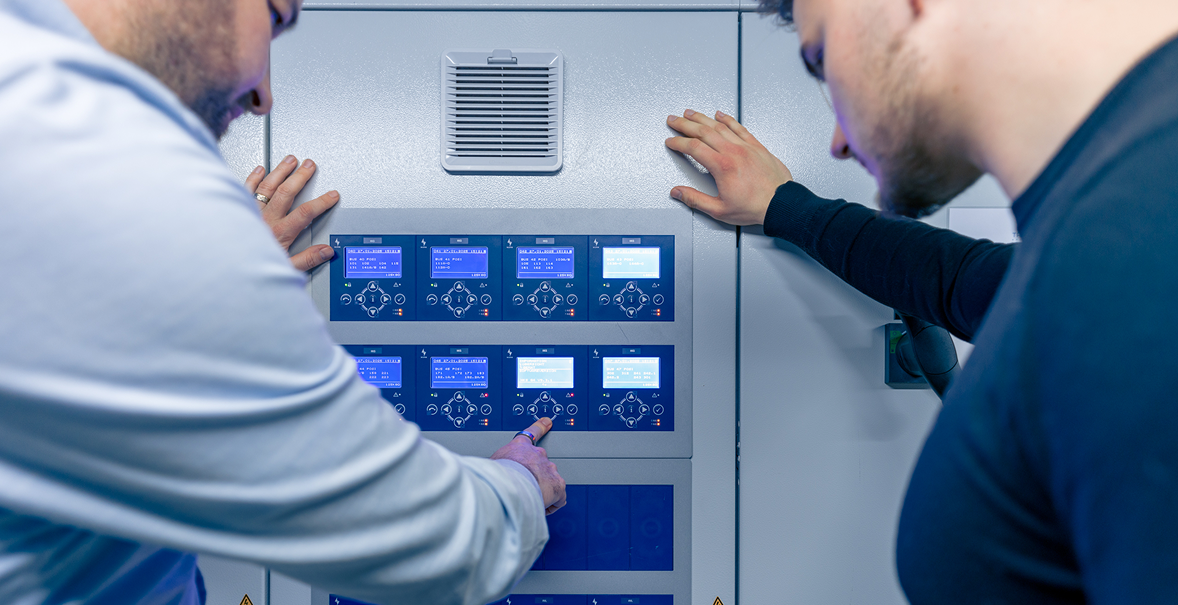
Parallel compression
Back in 2008, we implemented the first transcritical CO2 refrigeration system with parallel compression – a milestone in the development of energy-efficient refrigeration technology. Thanks to the innovative technology, which does not require all compressors to fully increase the pressure, the system’s power consumption has been significantly reduced.
The positive operating experience from this pioneering work underlines the efficiency and reliability of this approach. Today, parallel compression is an integral part of the technical standard – proof that we set the course for a sustainable future early on.
With our expertise and innovative strength, we continue to set standards in CO2 refrigeration technology.
Ejectors
The increase in efficiency using ejectors can essentially be attributed to two effects:
1. The refrigeration system is designed in such a way that the medium and low temperature evaporators are ‘partially flooded,’ i.e. the refrigerant is still partly liquid at the outlet of the evaporator. This ‘partially flooded’ operation allows evaporation temperatures to be raised by up to 8 K compared to conventional systems.
2. Driven by the pressure difference during relief, the ejectors foreward liquid or gaseous refrigerant. The liquid refrigerant in the suction accumulator of the medium temperature system is fed back to the ‘partially flooded’ medium and low temperature evaporators . The gaseous refrigerant is compressed to high pressure by the parallel compressors.
The combination of ejectors and parallel compression makes it possible to use the energy previously lost during pressure relief.
The ejector systems in supermarkets implemented by Frigo-Consulting since 2013 result in demonstrable energy savings of 20% to 30% compared to conventional CO2 refrigeration systems.
Ejector technology is revolutionising refrigeration technology and impresses with its robust and reliable operation. And how!
Energy transfer system
The energy transfer system (ETS) uses the high-temperature heat from the CO2 refrigeration system to generate valuable cooling using a Rankine cycle process. At the same time, this reduces the strain on the CO2 refrigeration system. The potential of high-temperature waste heat is exploited and energy losses from the CO2 refrigeration system are reduced, thereby reducing the power consumption of the entire system.
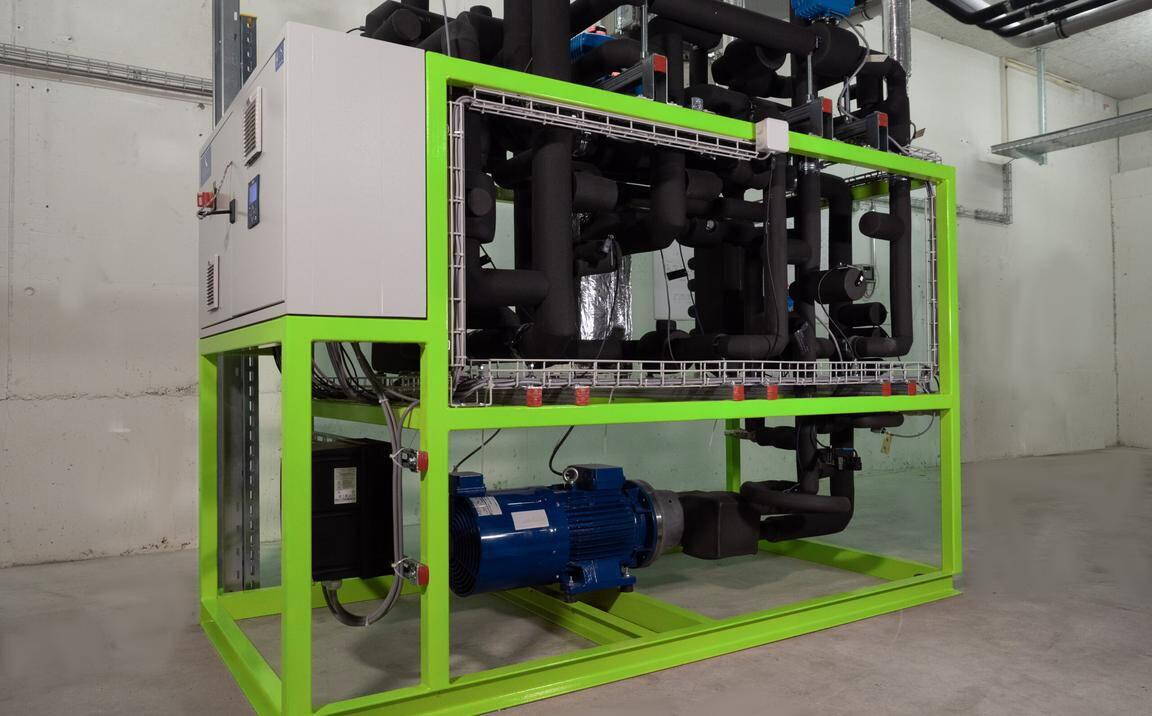
Integrated system
Three functions,
one system
Buildings can be heated and air-conditioned and food refrigerated with just one system – a solution that is not only versatile but also highly efficient. There are practically no limits to the individual design of such integrated systems. They significantly reduce the interfaces between different trades by not requiring an additional heat pump or air conditioning system. This ensures optimum use of available resources.
Demand for these innovative systems is growing steadily, particularly in retail and industry, as they are space-saving, cost-efficient and energy-saving at the same time.
Since the first installation in 2014, Frigo-Consulting has successfully engineered and implemented numerous integrated systems. Our expertise enables tailor-made solutions that perfectly combine functionality, sustainability and cost-effectiveness.
CO2 heat pumps
Thanks to positive experiences with CO2 refrigeration systems, use of CO2 heat pumps has been on the rise since 2016. When properly designed, dimensioned and integrated, CO2 heat pumps offer energy benefits.
The intended areas of application are heating, air conditioning, hot water preparation and high flow temperatures. A combination of several applications is also possible.
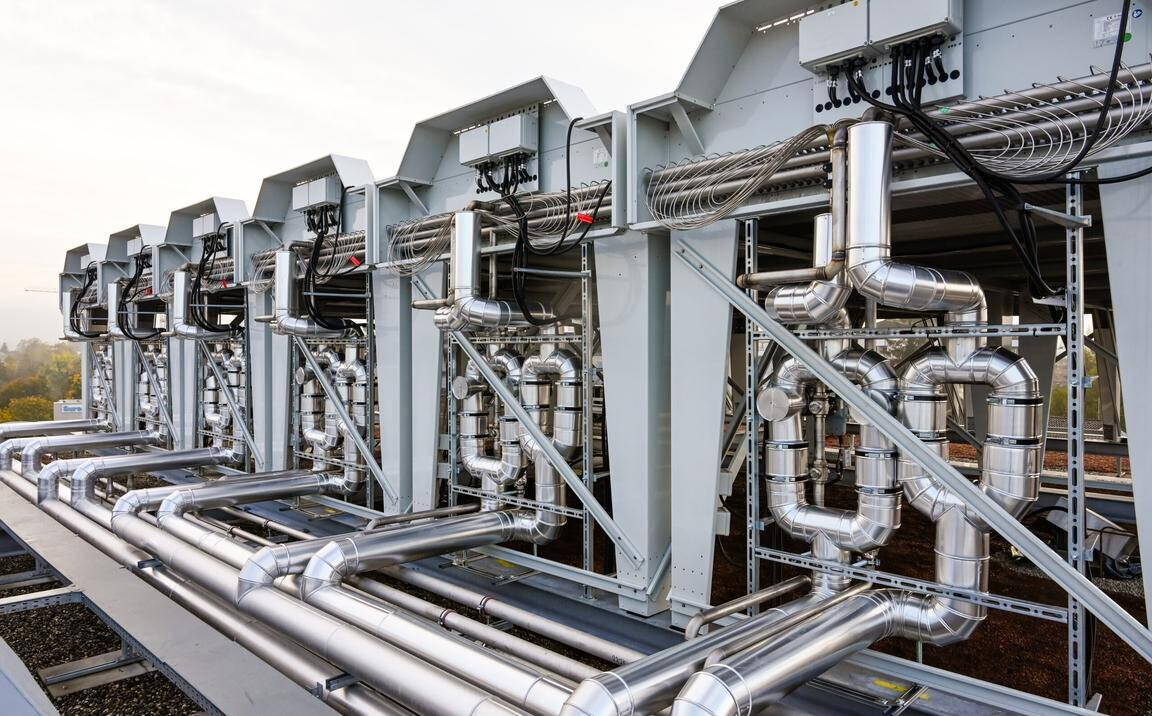
career in cooling
